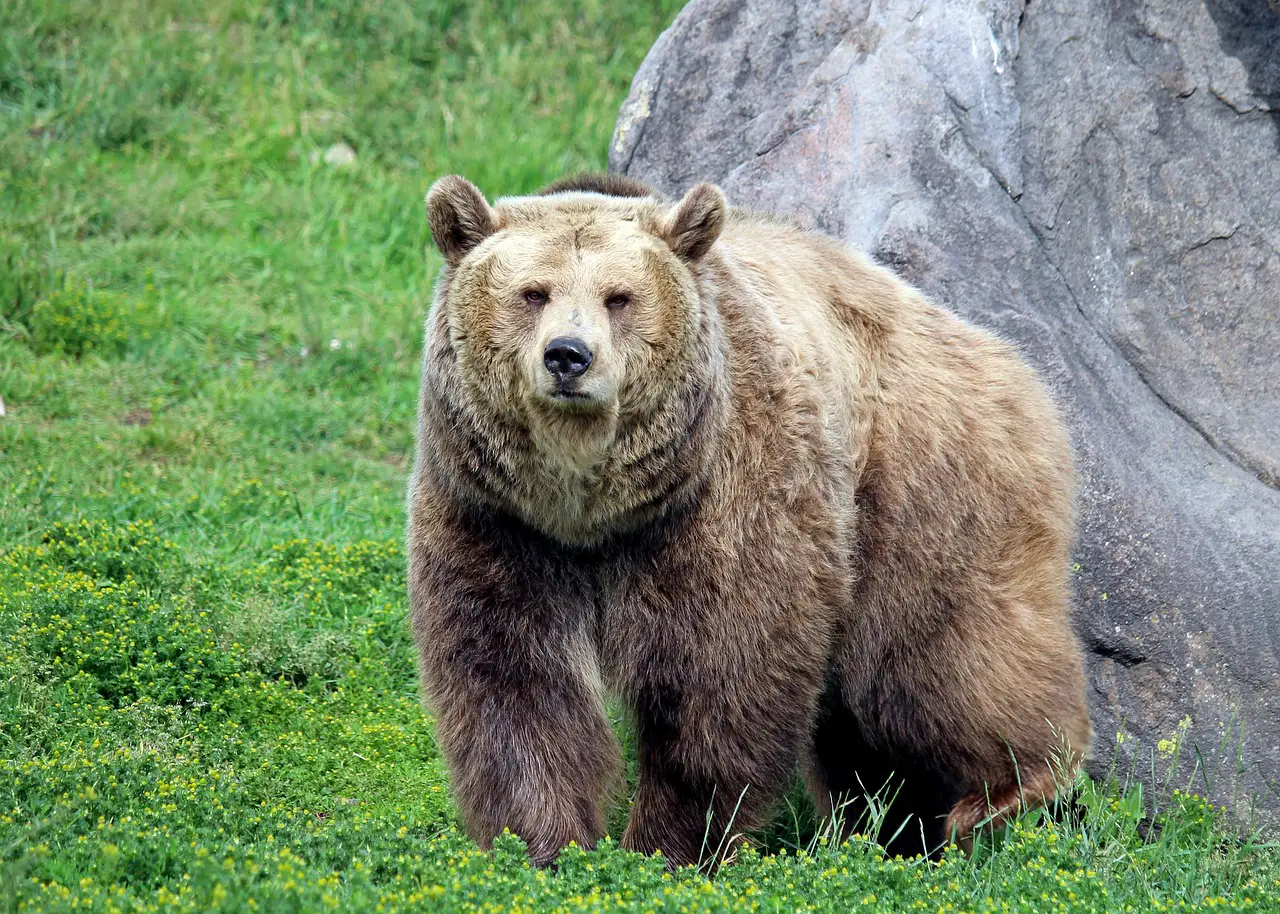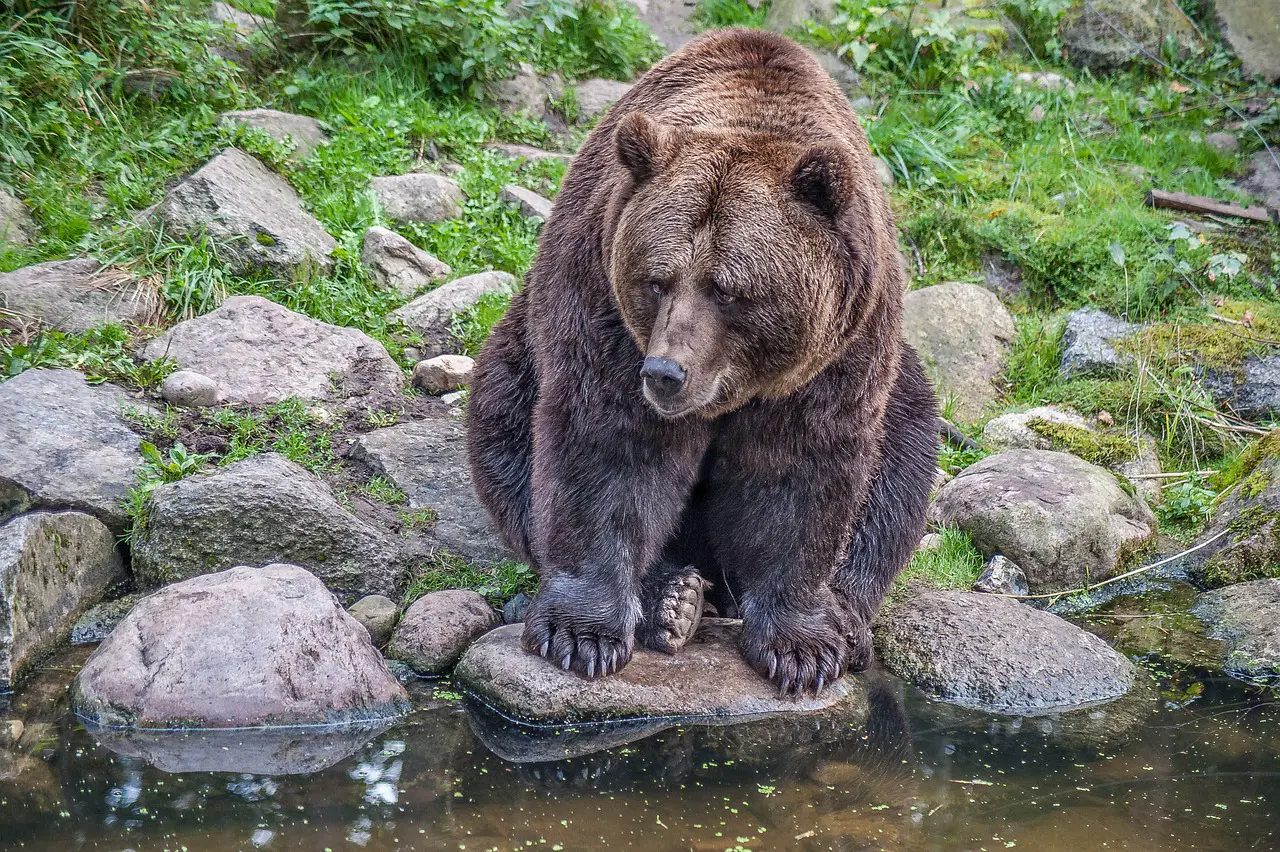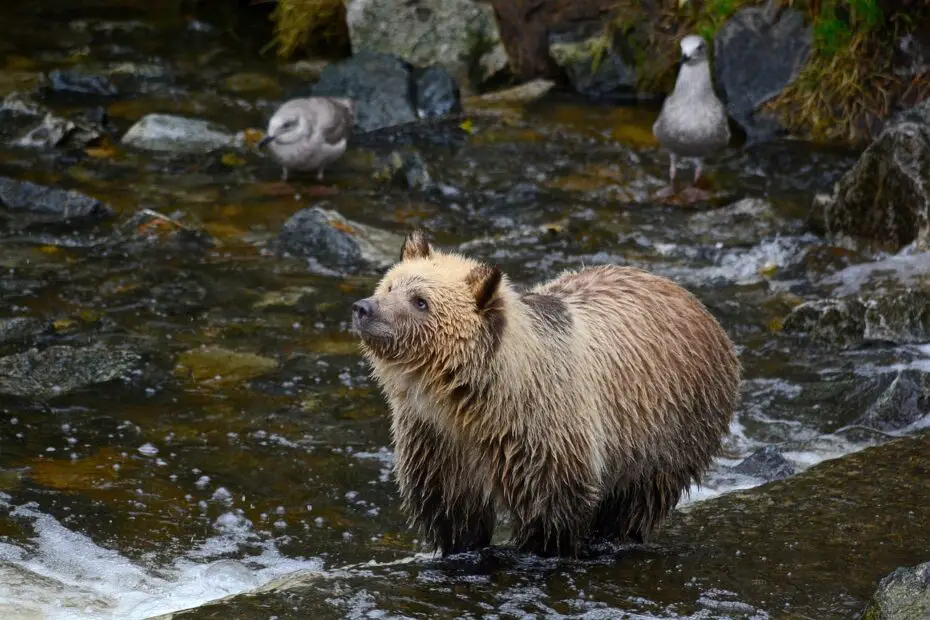Grizzly vs Brown Bear: What is the difference? Grizzly bears and brown bears are two of the most awe-inspiring creatures in the animal kingdom. While they share similarities, they also possess distinct characteristics that set them apart. In this article, we will explore the differences between grizzly bears and brown bears, shedding light on their physical attributes, habitats, behaviors, and conservation status.
You may also want to know the difference between an alligator and a crocodile.
Grizzly vs Brown Bear: Physical Characteristics
Grizzly bears and brown bears share a similar appearance, but careful observation reveals notable distinctions. Grizzly bears are typically smaller, weighing between 400 to 800 pounds, with a shoulder height of around 3 to 4 feet. They have a distinct hump of muscle on their shoulders, which gives them their name. In contrast, brown bears are larger, with males weighing between 500 to 1,500 pounds and standing around 4 to 5 feet tall at the shoulder. They have a more evenly distributed body shape and lack the prominent hump seen in grizzlies.

Grizzly vs Brown Bear: Distribution and Habitat
Grizzly bears and brown bears have overlapping distributions, but their habitat preferences differ. Grizzly bears can be found in North America, primarily in Alaska and parts of western Canada and the northwestern United States. They inhabit diverse environments such as forests, mountains, and grasslands. Brown bears, on the other hand, have a broader distribution, including North America, Europe, and Asia. They occupy various habitats, ranging from coastal areas and forests to tundra regions.
Grizzly vs Brown Bear: Behavior and Social Structure
Grizzly bears and brown bears exhibit similar behaviors, but there are nuanced differences in their social structures. Grizzly bears are often solitary creatures, with males and females typically living independent lives except during the mating season. Brown bears, on the other hand, can display more social tendencies. While they can be solitary, they are known to form familial groups, with mothers raising their cubs for a few years before they venture out on their own.
Grizzly vs Brown Bear: Diet and Feeding Habits
Grizzly bears and brown bears have omnivorous diets, but their feeding preferences can vary. Grizzly bears have a diverse diet that includes berries, nuts, roots, insects, fish, and small mammals. They are also known for their ability to hunt larger prey, such as elk and moose. Brown bears have a similar diet, but they often rely more heavily on fish, particularly during the salmon spawning season. They are excellent fishermen and will often congregate near rivers to feast on migrating salmon.
Grizzly vs Brown Bear: Reproduction and Life Cycle
Reproductive patterns and life cycles differ between grizzly bears and brown bears. Grizzly bears have a delayed implantation, where fertilized eggs do not immediately attach to the uterine wall, allowing the female to time the birth with optimal conditions. Cubs are born in the winter den and remain with their mother for about two to three years. Brown bears follow a similar reproductive pattern, but their cubs become independent at an earlier age, usually around two years old.

Conservation Status and Threats
Grizzly bears and brown bears face different conservation challenges. Grizzly bears are listed as a threatened species in the contiguous United States, with habitat loss, fragmentation, and conflicts with humans being significant threats. Brown bears have varying conservation statuses depending on their specific populations and regions. While some populations are stable, others, such as the endangered grizzly bear population in Europe, face significant conservation concerns.
Human Interactions and Management
Human encounters with grizzly bears and brown bears require caution and understanding. Both species are generally wary of humans and will avoid direct contact if possible. However, instances of conflicts can occur, especially when bears become habituated to human food sources or when their territories overlap with human settlements. Implementing effective management strategies, such as bear-resistant containers, education, and responsible camping practices, is crucial for minimizing negative interactions.
Cultural Significance and Symbolism
Grizzly bears and brown bears hold cultural significance in various societies and mythologies. For Native American tribes, grizzly bears symbolize strength, protection, and wisdom. They are often featured in legends and dances, embodying the spirit of the wild. Brown bears have also played significant roles in folklore and mythology, representing power, courage, and guardianship in different cultures across their range.
Conclusion
Grizzly bears and brown bears are captivating creatures that share similarities while exhibiting distinct characteristics. Understanding the differences between these majestic animals enhances our appreciation for their unique roles in ecosystems and their cultural significance. By fostering conservation efforts and promoting coexistence, we can ensure the survival and continued wonder of these magnificent bears.
FAQs
- What is the main difference between grizzly bears and brown bears? The main difference lies in their size and distribution. Grizzly bears are smaller and primarily found in North America, while brown bears are larger and have a wider distribution across North America, Europe, and Asia.
- Can grizzly bears and brown bears interbreed? Yes, grizzly bears and brown bears can interbreed, and their offspring are often referred to as “grizzly-brown bear hybrids” or “grizzbears.” However, such interbreeding is more common in areas where their ranges overlap.
- Are grizzly bears more aggressive than brown bears? Both grizzly bears and brown bears can display aggressive behavior if they feel threatened or if their cubs are in danger. However, the temperament of individual bears can vary, and it’s essential to approach any encounter with caution and respect.
- How can I stay safe during a bear encounter? It is crucial to educate yourself on bear behavior and follow safety guidelines. Carry bear spray, make noise while hiking to avoid surprising bears, and maintain a safe distance if you spot one. Avoid leaving food or attractants accessible to bears, especially in bear country.
- Do grizzly bears and brown bears hibernate? Yes, both grizzly bears and brown bears undergo a period of hibernation during the winter months. They enter dens and lower their metabolic rates, surviving on stored fat until spring when they emerge from their dens.
